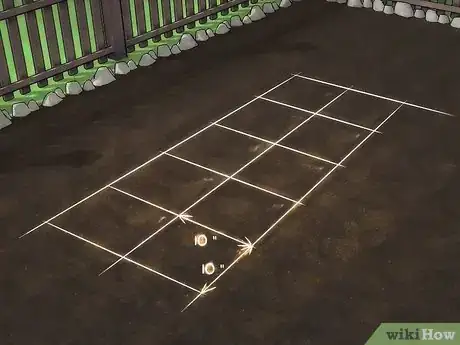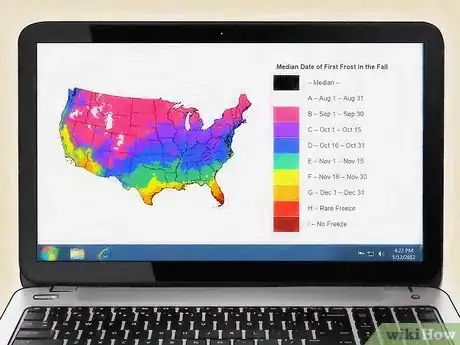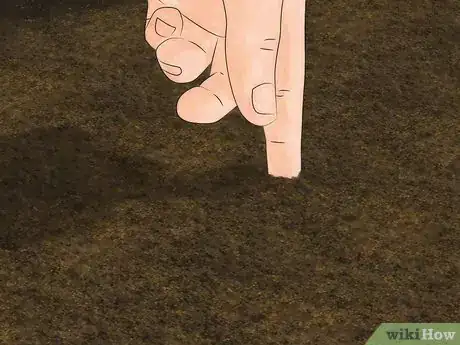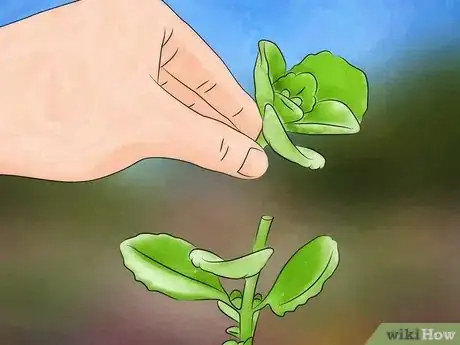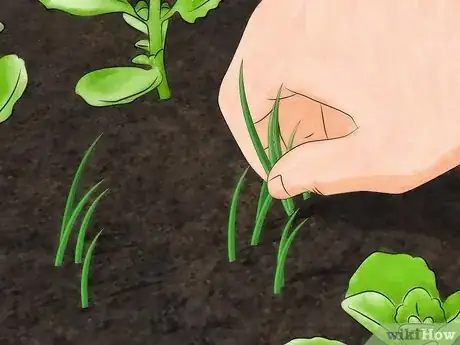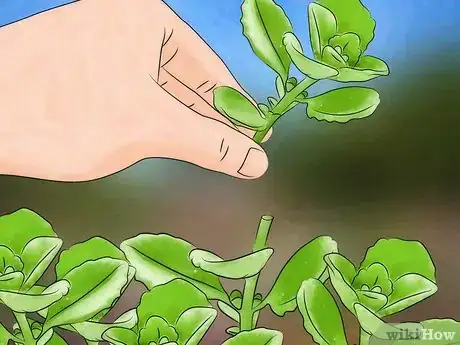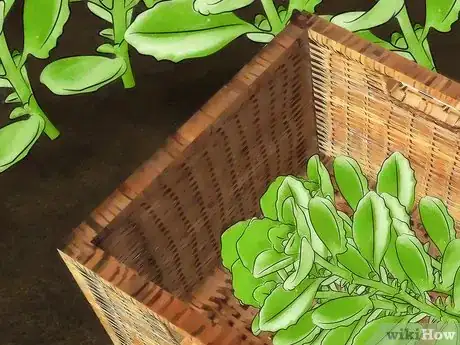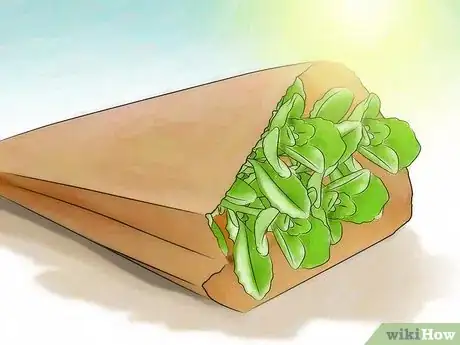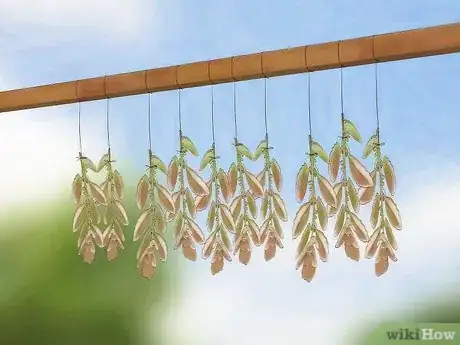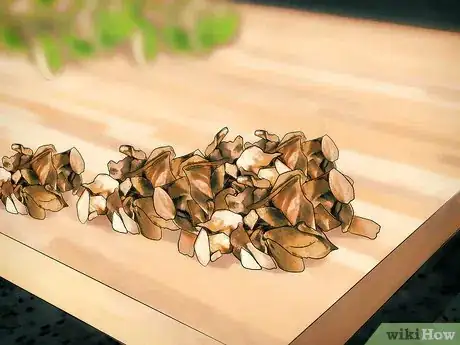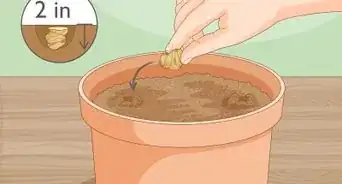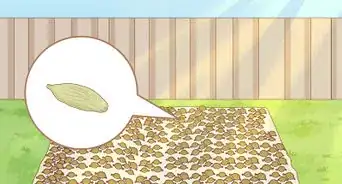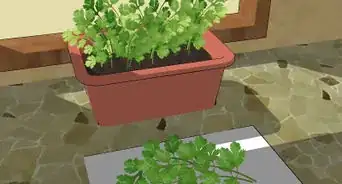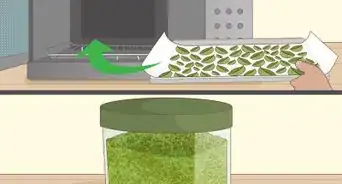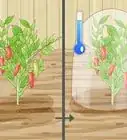This article was co-authored by Andrew Carberry, MPH. Andrew Carberry is a Food Systems Expert and the Senior Program Associate at the Wallace Centere at Winrock International in Little Rock, Arkansas. He has worked in food systems since 2008 and has experience working on farm-to-school projects, food safety programs, and working with local and state coalitions in Arkansas. He is a graduate of the College of William and Mary and holds a Masters degree in public health and nutrition from the University of Tennessee.
There are 8 references cited in this article, which can be found at the bottom of the page.
wikiHow marks an article as reader-approved once it receives enough positive feedback. In this case, 92% of readers who voted found the article helpful, earning it our reader-approved status.
This article has been viewed 141,879 times.
Oregano is an herb commonly used in Italian dishes. It is a hearty plant that provides lovely ground cover in addition to its uses in the kitchen. It can be grown both in your home and outside, which means that no matter where you live, with a little time and care, you could be enjoying fresh oregano of your own.
Steps
Determining Your Method for Growing
-
1Choose between seeds or clippings. Oregano can be grown from seeds or clippings, so if you already have some oregano plants, you may want to use clippings instead of buying new seeds. When using seeds, you can generally expect that roughly ¼ of the seeds won't grow, so you may want to plant several.[1]
- Clippings should only be taken from established plants. You should wait until the roots of your plants are well developed and new growth begins appearing before taking clippings.[2]
-
2Select your planting location. Oregano is a plant that loves sunshine and soil that drains well, so you should choose a planting location that has these two features. If you live in a colder part of the world, you may want to start your plant indoors and transfer it outside when the weather warms up.
- Oregano grows best in moderately fertilized soil. It's unlikely that you'll need to add compost or fertilizer for it to grow well. [3]
Advertisement -
3Plan extra space for multiple plants. A fully grown oregano plant will be about 2 to 2½ ft tall (61 to 76 cm) and about 2 ft wide (61 cm). For best results in your garden, you should give your oregano about 10 in (25 cm) of space between plants.[4]
- If you plan on growing your oregano indoors, choose a pot that is about 1 ft (30.5 cm) in diameter. This way your plant has adequate room to grow.[5]
-
4Plant early for a head start. You can plant your oregano as early as 6 to 10 weeks before the last predicted frost of spring.[6] However, in colder regions or during a cold snap, you may want to protect your plants with a layer of hay.[7]
- In place of hay, you can also use bed sheets, blankets, or plastic sheeting. To prevent damage to budding plants, you can use stakes to prop up your covering.
- Once the sun has risen and the air warmed, you should remove your covering from the plants. When using hay, you should remove it from covering the plants after the last frost.[8]
Planting and Caring for Your Oregano
-
1Plant your oregano. You'll want to plant seeds about ¼ inch (.64 cm) deep and bury clippings ½ inch (1.3 cm) deep. You should be patient while awaiting your plants to emerge from the ground since seeds often sprout slowly, though indoor planting may see seeds sprout in less time.
- You should avoid attempting to use seeds that have been stored long periods of time. As time passes, the chance the seeds will grow decreases.[9]
- Strip cuttings of their leaves on the end being planted.
- Plants usually take 5 to 10 days to sprout from the ground. However, your oregano may take more or less time depending on factors like soil quality, sunlight, and frequency of watering.[10]
-
2Water your oregano moderately. During the first few months of growth, water your plants regularly to get them started. Once they are established, you can reduce the amount of water. Check whether your plant needs water or not by touching the soil around it. If it feels dry, you should thoroughly water the area.[11]
- Plants in containers should be treated similarly to outdoor grown oregano. However, when watering, you should douse the plant until you notice water dripping from the drainage holes in the bottom of the container.[12]
-
3Trim your oregano for thicker growth. By trimming or pinching the leaves and ends of your plant, you can encourage the growth of denser leaves. Wait until the plant is about 4 in (10.2 cm) tall, and use a pair of shears or scissors to lightly thin the outer growth.
- Trimming also helps prevent excessive stem growth in your plant. This condition, called legginess, will reduce the yield of your crop.
- Where you trim your plant, you should notice it branch at that point when it continues growing. In turn, these branches will bear more leaves, meaning more oregano for you.[13]
- As you trim, you can use the fresh oregano in a recipe, or dry it to use later on.
-
4Remove older plants. Sick or thin plants can crowd better ones and steal resources, negatively impacting the potential of the healthier plants. Plants that are three or four years old are at the end of the oregano life cycle and will be less productive, making these prime candidates for removal.[14]
- You may not remember which plants are old and which are young. In this case, you should wait until early spring when you should be able to judge the plant's age by its initial growth.[15]
-
5Weed around your plants. Weeds can steal valuable nutrients from your oregano, block out the much needed sun, or soak up the water intended for your plants. Try to target weeds when young, as these will be easier to remove at that time. Grasp the weed firmly at its base with firm, steady pressure, and try to pull up as much of the roots as possible.[16]
- There are many garden tools you might use to assist in your weeding endeavors. A spade or rooting tool could make your weeding less of a chore.
-
6Pick your oregano. Oregano can be used fresh from the garden, though you should wash it first to rinse off dirt, bugs, and bacteria. Allow the washed herb to air dry or pat it dry with a towel. Now it's ready to be used in any recipes that call for fresh oregano.
- Oregano reaches peak potency right before it blooms. Blooming season is usually in early July, though this may vary depending on the region you live in.[17]
Drying Your Oregano
-
1Gather your oregano. The easiest time for you to do this is in the morning after the sun has risen and evaporated any dew. Use a pair of shears or scissors to cut leafy bunches free of the plant, leaving a portion of the stem remaining. Then, gather the bunches into small bundles and use a rubber band around the stems to fasten the bundles together.[18]
- Try not to bundle the oregano together too densely. This can cause uneven drying and could result in a less than desirable finished product.
-
2Cover the bundles. This will prevent dust from accumulating on your oregano as it dries and will keep the sun from bleaching the color from the plant. Paper bags work well for covering your bundles, but you should cut slits in these bags to promote airflow so the herb dries better.
- You should keep an eye on your oregano while it is drying. Direct sunlight can sometimes cause moisture to build up in the bag, which could cause mold to grow and ruin your dried oregano.
-
3Hang the bundles to dry. The time it takes to dry will depend on your climate. In some regions, it may take a few days, others may take as long as two weeks. You'll want to hang your plants in an area that is warm and dry, but out of direct sunlight. Some places you might consider for drying your oregano include your attic, porch, a clothesline, or even in your kitchen.
- If you plan on drying outside, you should keep an eye on the weather. Rain could spoil your hard work.
-
4Store your dried oregano. When the leaves have become brittle, it's ready to be stored. Lay out a sheet of wax paper and place your bundles onto it. Then you should crumble the plants and pick out the stems, which can be thrown away. Store your dried oregano in an airtight jar, and enjoy it throughout the year.
- To easily transfer your dried oregano into a container, you might want to take the wax paper by two corners and form a funnel with it. Place one end of the funnel above the mouth of your container and tap the paper to shake the dried leaves into it.
Expert Q&A
Did you know you can get premium answers for this article?
Unlock premium answers by supporting wikiHow
-
QuestionHow long after it is dried can oregano be used?
 Andrew Carberry, MPHAndrew Carberry is a Food Systems Expert and the Senior Program Associate at the Wallace Centere at Winrock International in Little Rock, Arkansas. He has worked in food systems since 2008 and has experience working on farm-to-school projects, food safety programs, and working with local and state coalitions in Arkansas. He is a graduate of the College of William and Mary and holds a Masters degree in public health and nutrition from the University of Tennessee.
Andrew Carberry, MPHAndrew Carberry is a Food Systems Expert and the Senior Program Associate at the Wallace Centere at Winrock International in Little Rock, Arkansas. He has worked in food systems since 2008 and has experience working on farm-to-school projects, food safety programs, and working with local and state coalitions in Arkansas. He is a graduate of the College of William and Mary and holds a Masters degree in public health and nutrition from the University of Tennessee.
Food Systems Expert
-
QuestionHow often can I harvest oregano leaves?
 wikiHow Staff EditorThis answer was written by one of our trained team of researchers who validated it for accuracy and comprehensiveness.
wikiHow Staff EditorThis answer was written by one of our trained team of researchers who validated it for accuracy and comprehensiveness.
Staff Answer wikiHow Staff EditorStaff Answer
wikiHow Staff EditorStaff Answer -
QuestionIs marjoram also oregano?
 wikiHow Staff EditorThis answer was written by one of our trained team of researchers who validated it for accuracy and comprehensiveness.
wikiHow Staff EditorThis answer was written by one of our trained team of researchers who validated it for accuracy and comprehensiveness.
Staff Answer wikiHow Staff EditorStaff Answer
wikiHow Staff EditorStaff Answer
Warnings
- Do not use pesticides on your oregano unless these are specially formulated to be used on edible plants.⧼thumbs_response⧽
- You should always wash garden grown vegetables and herbs before consuming.⧼thumbs_response⧽
Things You'll Need
- Garden clippers
- Oregano plants or seeds
- Trowel/spade
- Watering can
- Paper bags (for drying)
- Rubber bands (for drying)
- Wax paper (for drying)
References
- ↑ http://www.almanac.com/plant/oregano
- ↑ http://communitytable.parade.com/351643/juliebawdendavis/garden-jargon-a-dictionary-of-gardening-terms/
- ↑ https://www.thekitchn.com/everything-you-need-to-know-about-growing-oregano-220612
- ↑ http://veggieharvest.com/herbs/oregano.html
- ↑ https://www.thekitchn.com/everything-you-need-to-know-about-growing-oregano-220612
- ↑ http://www.almanac.com/plant/oregano
- ↑ http://veggieharvest.com/herbs/oregano.html
- ↑ http://marinmg.ucanr.edu/Marin_Master_Gardener_Help_Desk/Leaflet/How_to_protect_plants_from_frost/
- ↑ http://veggieharvest.com/herbs/oregano.html
- ↑ https://myfolia.com/plants/28-oregano-origanum-vulgare
- ↑ http://veggieharvest.com/herbs/oregano.html
- ↑ http://www.almanac.com/plant/oregano
- ↑ http://www.almanac.com/plant/oregano
- ↑ http://veggieharvest.com/herbs/oregano.html
- ↑ http://www.almanac.com/plant/oregano
- ↑ http://www.finegardening.com/six-tips-effective-weed-control
- ↑ http://www.almanac.com/plant/oregano
- ↑ http://www.simplycanning.com/how-to-dry-herbs.html
About This Article
Before you grow oregano, pick a spot outside that gets a lot of sunshine and where the soil drains well. Then, plant your oregano 6-10 weeks before the last predicted frost of spring. Bury seeds ¼ inch deep and clippings ½ inch deep, and water your plants regularly to get them started. After 5-10 days, you should be able to see sprouts popping up! For tips from our Professional Gardener, including how to pick and dry your oregano, keep reading!


